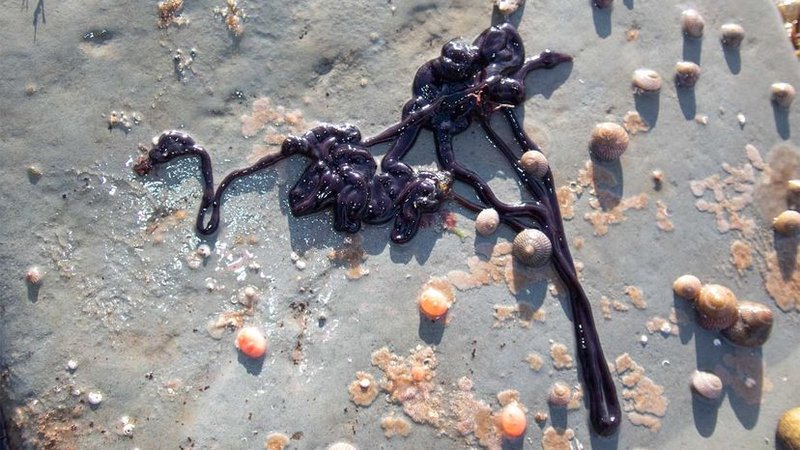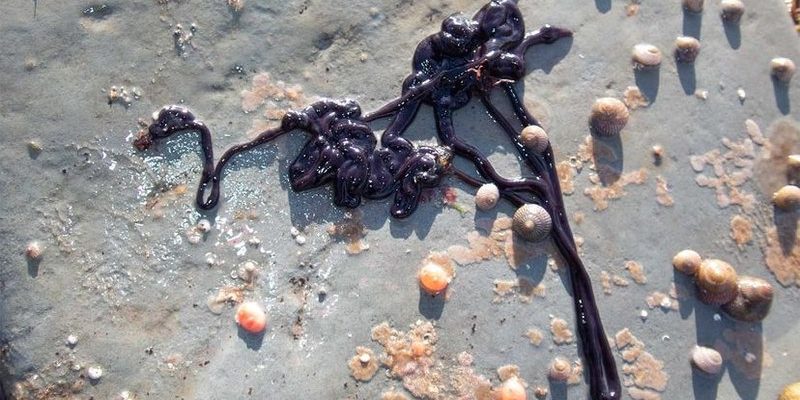
To understand the behavior of bootlace worms during storm surges, we need to delve into their world a bit. Imagine the ocean is a living, breathing organism, constantly changing. When a storm hits, the water becomes choppy, and everything beneath the surface shifts dramatically. Bootlace worms, thriving in that shifting environment, adapt in unique ways. Let me explain how these fascinating creatures respond when the waves get wild.
What Are Bootlace Worms?
Bootlace worms, scientifically known as *Lineus longissimus*, are fascinating members of the marine world. They belong to the phylum Nemertea, also known as ribbon worms. Their soft bodies can stretch incredibly long and are usually found in coastal waters, often burrowed in sand or hidden among seaweed.
One of the most interesting aspects of bootlace worms is their ability to regenerate. If a piece of them is damaged, they can grow it back as if it were no big deal. It’s like the superhero of the marine realm! This regeneration ability helps them survive in their sometimes harsh environments, where predators might be lurking around every corner.
These worms are not just long and squishy; they also have a fascinating feeding method. They use a long, sticky proboscis to capture prey, which can include small fish, crustaceans, and other marine organisms. This unique feeding strategy sets them apart in the marine food chain.
Storm Surges Explained
Storm surges are not just a dramatic term; they represent a powerful natural phenomenon. Essentially, a storm surge is an abnormal rise in seawater level during a storm, caused by strong winds and low atmospheric pressure. Picture it as Mother Nature pushing water shoreward, creating an overwhelming rush of waves.
Usually, storm surges occur during hurricanes or severe storms, leading to flooding and coastal erosion. The water can rise several feet above normal high tide levels, affecting marine habitats and coastal ecosystems. It’s during these surges that the behaviors of marine life, like our bootlace worms, come into focus.
During a storm surge, the tumultuous water can uproot plants and disturb sandy sea beds. For creatures like bootlace worms, this might sound threatening, but it’s an opportunity. The surge can bring in more food and even mix up their habitat, creating a temporary buffet of nutrients. Their ability to adapt quickly becomes vital for survival during these chaotic times.
Bootlace Worm Behavior During Storm Surges
So, how do bootlace worms react when storm surges hit? Honestly, they put on quite a show. One of the key behaviors observed is their ability to burrow deeper into the substrate. While surface waters are turbulent, they find refuge below where conditions are more stable. It’s like they’re retreating to their safe zone when the waves start crashing.
Another fascinating behavior is their movement. During a storm surge, bootlace worms tend to stretch out along the seabed, anchoring themselves in place. This anchoring helps them resist strong currents. It’s almost as if they’re bracing themselves against an invisible force, staying grounded while the water churns above.
Interestingly, they’re not just hiding out. Bootlace worms can also take advantage of the storm surge to propagate their species. The upheaval can mix nutrients in the water and even trigger their reproductive cycles. Instead of being merely victims of the storm, they can turn a potentially harmful situation into a chance to thrive.
Survival Strategies in a Changing Environment
Bootlace worms have developed various survival strategies that allow them to navigate their ever-changing habitats. One such strategy is their remarkable adaptability. When environmental conditions change—like during a storm—they can adjust their behavior to make the most of available resources.
This adaptability goes beyond just seeking shelter. They can also modify their feeding patterns. With the surge stirring up sediments and prey, bootlace worms can time their feeding to take advantage of the influx of nutrients. Think of them as opportunistic eaters, adjusting to whatever the storm brings their way.
Additionally, their ability to regenerate becomes even more critical during these times. If a bootlace worm gets damaged by strong currents or predators taking advantage of the chaos, it can grow back what it lost. This regenerative power is a game-changer in maintaining their populations.
The Impact of Storm Surges on Coastal Ecosystems
Storm surges don’t just affect bootlace worms; they have a cascading impact on entire coastal ecosystems. The influx of freshwater and changing salinity levels can disrupt the delicate balance within these habitats. For many species, this can lead to stress, but for bootlace worms, it can mean new opportunities.
While the surge may damage certain habitats, it can also create new ones. The mixing of sediment and nutrients can enhance the growth of plankton and other microorganisms, vital in the food web. This change can attract various marine life, promoting biodiversity in the region.
At the same time, it’s essential to consider that not all marine organisms thrive in storm conditions. Some might struggle to adapt, leading to shifts in the community structure. Bootlace worms, however, seem to have evolved to withstand these changes better than many other species, giving them a certain edge.
Conservation and Future Research
As we continue to learn about bootlace worms and their behaviors during storm surges, conservation efforts play a crucial role. Protecting coastal habitats ensures that these fascinating creatures have the environment they need to thrive. By maintaining healthy ecosystems, we help ensure that bootlace worms and other marine life can adapt to changing conditions.
Research on how storm surges affect bootlace worms, along with other marine organisms, is still ongoing. Scientists are continuously studying their responses to various environmental changes to better understand their roles in the ecosystem. This ongoing research will help us better manage coastal regions and protect the intricate relationships within these habitats.
In a world where climate change increasingly influences weather patterns and storm intensities, understanding the behavior of bootlace worms during storm surges becomes more essential. These resilient creatures could serve as indicators of ecosystem health, showing us how well our oceans can adapt to ongoing changes.
Bootlace worms are truly remarkable creatures with fascinating behaviors, especially during storm surges. By understanding how they adapt, escape the chaos, and even thrive amid turmoil, we gain insight into the resilience of life beneath the waves.
Their ability to navigate challenging conditions teaches us about the importance of adaptability and survival. As we face increasingly unpredictable environmental challenges, observing how creatures like bootlace worms react can guide us toward better conservation strategies. So, next time you think of bootlace worms, remember that they’re not just long, squiggly beings—we’re looking at resilient survivors of nature’s epic storms.

